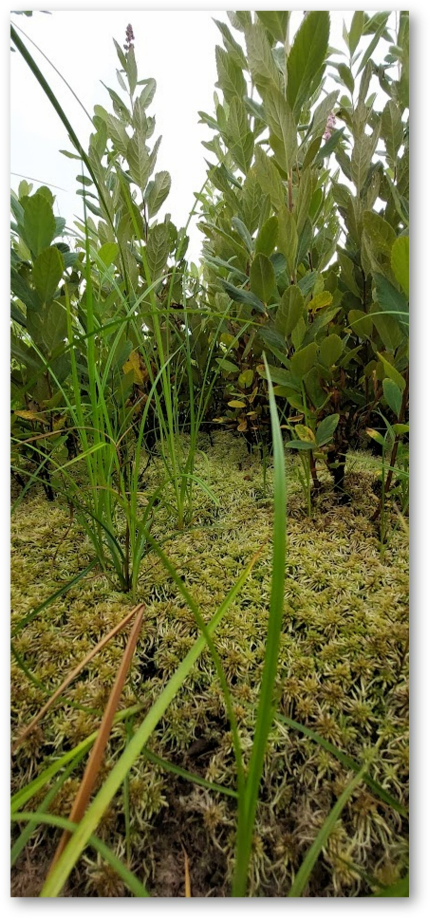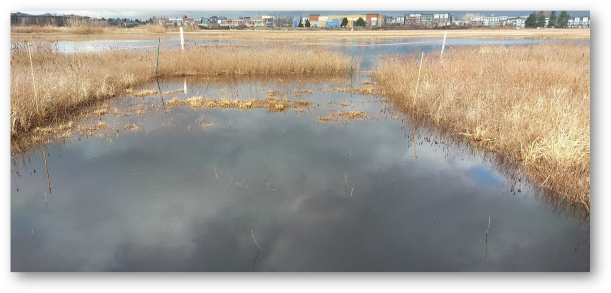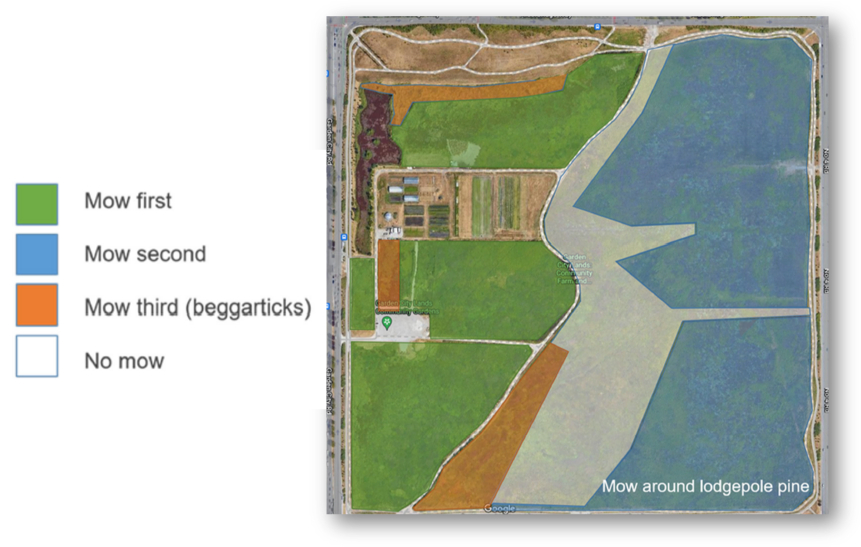

Mowing inhibits Sphagnum regeneration in a degraded peat bog.
Sustainable Agriculture Student Research Project
Effects of Mowing on Sphagnum Regeneration in a Degraded Peat BogMichael Bomford, Rue Badanic, and Jordan Roper, Department of Sustainable Agriculture, 2023 |
Introduction
- Sphagnum mosses are keystone species in healthy peatlands, which are important carbon sinks
- Bog restoration is being attempted at Richmond’s Garden City Lands, on the western margin of the fragmented and degraded Greater Lulu Island peat bog
- The site has historically been mowed annually to prevent invasive species from dominating
- Effects of mowing on Sphagnum are unknown

Objective
- Compare Sphagnum growth and vigor in mowed and unmowed plots at the Garden City Lands
Methods
- Study conducted in an area of the bog dominated by hardhack (Spirea douglasii) and Stika sedge (Carex aquatilis var. dives).
- 24 paired plots (6.0 x 6.25 m) in a randomized complete block design with 12 replicates and two treatments:
- Mowed: Annual mowing with a flail mower in late October until 2022
- Unmowed: No annual mowing from 2019 onwards
- Sphagnum cover (%) estimated in November 2019, 2022, and 2023
- 2019: Proportion of surface covered with green plant matter calculated from photographs (Canopeo app)
- 2022 & 2023: Sphagnum patch length measured along two transects through each plot, with field estimates of Sphagnum cover recorded for each patch
- S = (100 * p * c) / t
- S = Sphagnum cover (%)
- p = patch length
- c = cover estimate within patch
- t = total transect length
- S = (100 * p * c) / t
- ANOVA used to test for effects of year, treatment, replicate, and year * treatment interaction on Sphagnum cover

Results
- No difference was observed between treatments in 2019
- Sphagnum cover increased from 6.6% in 2019 to 31.9% in 2023 in unmowed plots, but did not increase in mowed plots (Fig. 1)
- Most Sphagnum in mowed plots occurred near plot edges
Image
Figure 1. Sphagnum cover in mowed and unmowed plots between 2019 and 2023. Error bars denote standard error.
Discussion
- Annual mowing clearly inhibits Sphagnum regeneration at the study site
- None of the plots will be mowed from 2023 onwards. Continued monitoring will determine how long the difference between the treatments persists.
- Based on this work, the Richmond Parks Department has modified its annual mowing regime (Fig. 2):
- Areas with similar vegetation to the study site, and little to no invasive European birch (Batula pendula), are being left unmowed.
- Fall mowing is timed to promote desirable bog species.

Figure 2. Fall 2023 mowing plan for Garden City Lands.
Acknowledgements
Thanks to the City of Richmond for allowing this work on public land, and to Percy Bomford-Moore and members of the Garden City Conservation Society for assistance with plot setup and maintenance.